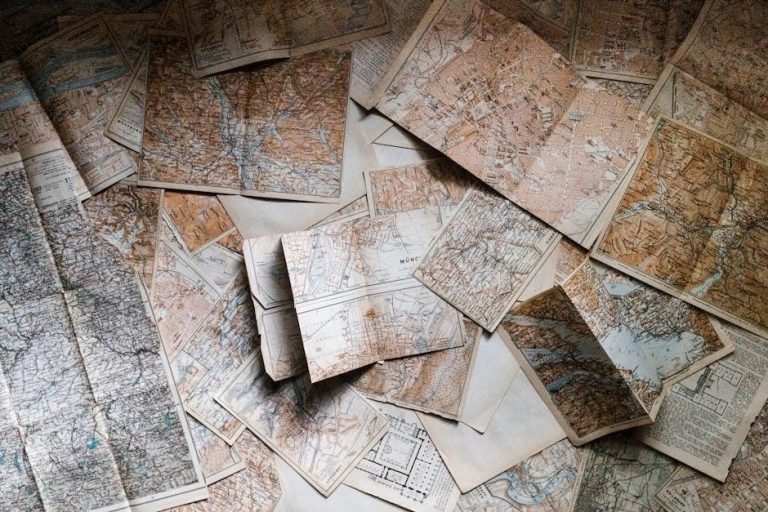
Choosing the right tablecloth size ensures both functionality and aesthetics. This guide will walk you through measuring your table‚ calculating fabric needs‚ and selecting the perfect fit for any occasion.
1.1 Importance of Proper Tablecloth Size
Proper tablecloth size is essential for both aesthetics and functionality. A well-fitted tablecloth enhances the visual appeal of a table setting‚ creating a polished look for formal events or casual gatherings. It prevents the fabric from dragging on the floor‚ which can cause tripping hazards or damage to the cloth. Additionally‚ the right size ensures stability‚ keeping the tablecloth securely in place during use. Whether for a wedding‚ dinner party‚ or everyday use‚ a correctly measured tablecloth contributes to a seamless and elegant presentation. It also ensures fabric efficiency‚ avoiding unnecessary waste or excessive bulk.
1.2 Brief Overview of Table Shapes and Sizes
Tables come in various shapes‚ including round‚ rectangular‚ oval‚ and square‚ each requiring specific measurements for the perfect tablecloth fit. Round tables are measured by diameter‚ while rectangular and oval tables need both length and width. Square tables are measured by the length of one side. Understanding your table’s shape and size is crucial for selecting the right tablecloth‚ ensuring a seamless fit and desired aesthetic. Whether formal or casual‚ accurate measurements guarantee functionality and style‚ making your table setting polished and inviting for any occasion.
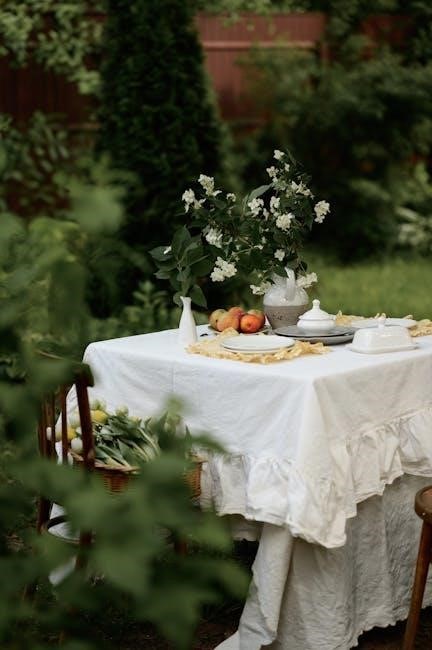
How to Measure Your Table
Accurate table measurements are essential for choosing the right tablecloth. Measure the diameter for round tables and length and width for rectangular‚ oval‚ or square tables.
2.1 Measuring Round Tables
For round tables‚ measure the diameter by stretching a flexible measuring tape across the table through its center. Ensure the tape is level and straight for accuracy. Record the longest measurement across the table’s surface. This measurement will serve as the foundation for calculating the tablecloth size. If the table has an uneven shape or obstructions‚ measure the widest point to ensure proper coverage. For large tables‚ a string or ribbon can help mark the diameter before measuring. This step is crucial for determining the correct size and fit of your tablecloth.
2.2 Measuring Rectangular and Oval Tables
For rectangular and oval tables‚ measure both the length and width using a flexible measuring tape. Start by measuring the longest side (length) from one edge to the other‚ ensuring the tape is straight and level. Next‚ measure the width‚ which is the shorter side. For oval tables‚ treat them similarly to rectangular ones‚ as they typically have defined length and width dimensions. Record both measurements accurately to determine the appropriate tablecloth size. If the table has irregular shapes or obstructions‚ measure the widest points to ensure proper fit and even coverage.
2.3 Measuring Square Tables
Measuring a square table is straightforward. Start by measuring one side of the table from one edge to the other using a measuring tape. Since all sides are equal‚ this single measurement represents the table’s length‚ width‚ and diagonal. Record this measurement to determine the appropriate square tablecloth size. Ensure the tape is straight and level for accuracy. If the table has rounded corners or obstructions‚ measure the longest distance to ensure the cloth fits properly. This measurement will help you select a tablecloth that provides the desired drop and aesthetic appeal for your event or setting.
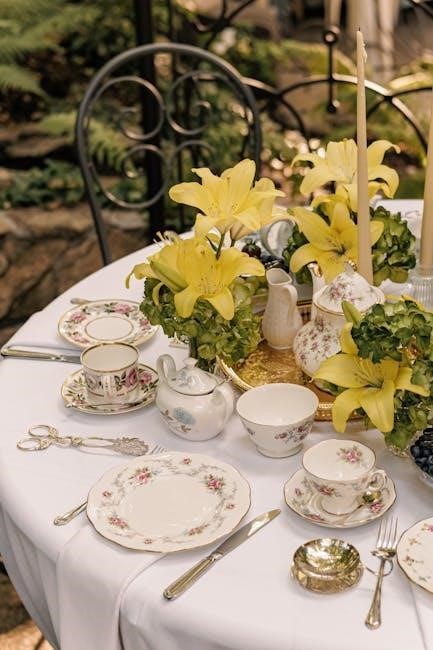
Calculating Tablecloth Size
Measure your table’s dimensions‚ add twice the desired drop to both length and width‚ and calculate fabric needs to ensure a perfect fit for your tablecloth.
3.1 Determining the Drop Length
Determining the drop length is crucial for achieving the desired aesthetic. Measure from the tabletop edge to the floor or lap‚ depending on the occasion’s formality. For casual gatherings‚ a shorter drop of 6-8 inches is sufficient‚ while formal events often require a longer drop of 12-15 inches. Ensure the drop is consistent around the table for a polished look. This measurement‚ combined with the table’s dimensions‚ will guide the fabric requirements for a seamless fit. Always consider the table’s shape and leg placement when calculating the drop to avoid obstruction or uneven drape.
3.2 Calculating Fabric Requirements
To calculate fabric requirements‚ start by adding twice the desired drop length to both the table’s length and width (or diameter for round tables). This gives the total fabric dimensions needed. For example‚ a 60-inch round table with a 12-inch drop requires a 60 + 24 = 84-inch diameter fabric. If the fabric width is narrower‚ divide the total length by the fabric width to determine how many lengths are needed. Add a little extra for hems or seams. Using a tablecloth size chart can simplify this process and ensure accuracy for a perfect fit.
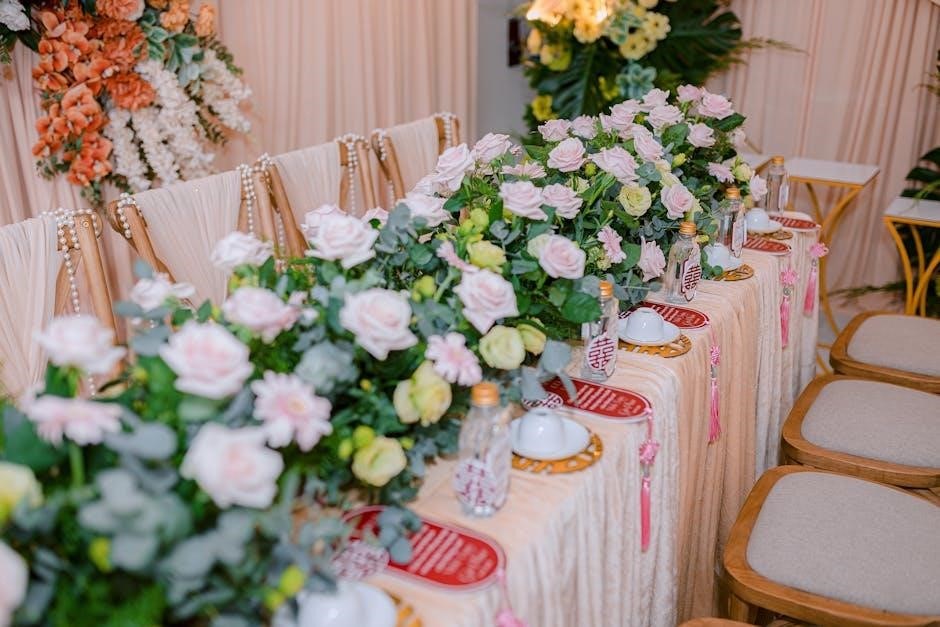
Factors Influencing Tablecloth Size
Desired overhang‚ aesthetics‚ and occasion formality are key factors. These elements ensure the tablecloth fits perfectly while enhancing the table’s appearance for any setting or event.
4.1 Desired Overhang and Aesthetics
The desired overhang and aesthetics play a crucial role in determining the ideal tablecloth size. The overhang refers to the fabric extending beyond the table’s edges‚ typically ranging from 6 to 12 inches for a standard drop. Aesthetics are equally important‚ as they influence the visual appeal of the setup. For formal events‚ a longer overhang is often preferred to create an elegant look‚ while casual gatherings may opt for a shorter‚ more relaxed style. Additionally‚ the table’s shape and the room’s decor can further guide your decision‚ ensuring a harmonious and polished appearance for any occasion.
4.2 Occasion and Formality
The occasion and level of formality significantly influence the choice of tablecloth size and style. Formal events‚ such as weddings or banquets‚ often require larger tablecloths with a more substantial overhang for an elegant appearance. Casual gatherings‚ like family dinners or picnics‚ may opt for smaller‚ more practical sizes. The formality of the event also dictates the fabric type and design‚ ensuring the tablecloth complements the overall aesthetic. By considering the occasion‚ you can select a tablecloth that enhances the ambiance while meeting functional needs. Always refer to size charts or guides to ensure the perfect fit for your event.
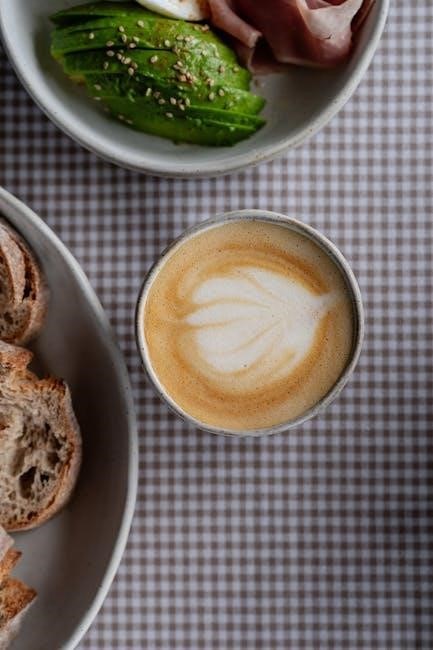
Tablecloth Sizes for Different Occasions
Tablecloth sizes vary based on the event‚ ensuring the right fit and aesthetic. Formal gatherings require larger sizes for elegance‚ while casual events prefer practical‚ smaller options.
5.1 Formal Events
For formal events‚ tablecloth sizes are chosen to create an elegant and polished appearance. Round tables typically require tablecloths with a diameter of 90 to 120 inches‚ ensuring ample drape. Rectangular or oval tables often use cloths that hang evenly on all sides‚ with lengths ranging from 90 to 144 inches. The drop length for formal settings is usually 30 inches or more‚ providing a luxurious look. Proper measurement and fabric selection are crucial to achieve a sophisticated ambiance‚ ensuring the tablecloth complements the event’s decor and atmosphere. This attention to detail enhances the overall aesthetic‚ making the event feel more refined and organized.
5.2 Casual Gatherings
Casual gatherings allow for more flexibility in tablecloth sizes. Round tables often use cloths with a diameter of 70 to 90 inches‚ while rectangular or oval tables may have lengths between 70 and 120 inches. The drop length for casual settings can be shorter‚ typically 12 to 20 inches‚ creating a relaxed yet cohesive look. Measuring the table accurately ensures the tablecloth fits well without overwhelming the space. This approach balances comfort and style‚ making the event feel warm and inviting while maintaining a neat appearance. It’s a practical choice for everyday use or informal get-togethers with friends and family.
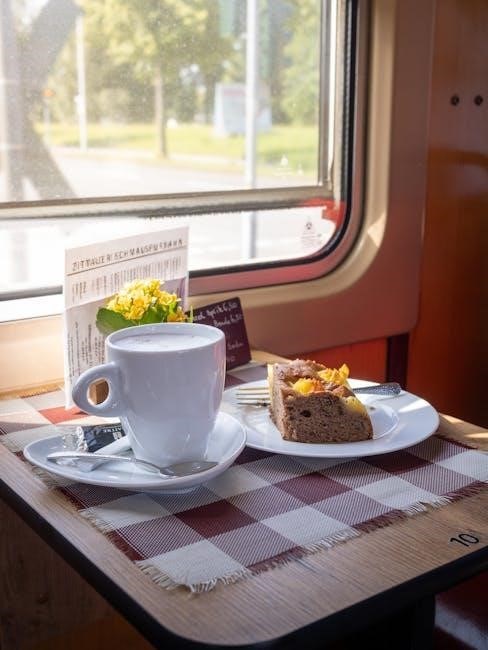
Tablecloth Shapes
Tablecloths come in various shapes‚ including round‚ rectangular‚ oval‚ and square. The shape should match your table for a seamless fit and desired aesthetic appeal.
6.1 Round Tablecloths
Round tablecloths are ideal for circular tables‚ creating a cohesive and elegant look. To measure‚ determine the table’s diameter‚ then add twice the desired drop length. For example‚ a 60-inch table with a 10-inch drop requires a 80-inch tablecloth. This ensures even draping around the table. Round tablecloths are popular for formal events due to their seamless fit and aesthetic appeal. Fabric requirements depend on the diameter and drop‚ so accurate measurements are essential for a perfect fit.
6.2 Rectangular and Oval Tablecloths
Rectangular and oval tablecloths are versatile and suitable for most table shapes. To measure‚ determine the table’s length and width. Add twice the desired drop to both dimensions to calculate the tablecloth size. For oval tables‚ measure the longest length and width. Rectangular tablecloths are popular for their clean‚ formal look‚ while oval ones offer a softer aesthetic. Ensure accurate measurements to avoid excess fabric or a tight fit. Fabric requirements depend on the table’s dimensions and the desired drape. Proper sizing ensures a seamless fit and enhances the table’s appearance for any occasion.
6.3 Square Tablecloths
Square tablecloths are ideal for square tables‚ offering a clean‚ balanced look. To measure‚ determine the table’s length and width‚ ensuring they are equal. Add twice the desired drop to each dimension for the total fabric size. Square tablecloths are versatile and work well for both casual and formal settings. They provide a modern aesthetic and can enhance the symmetry of a room. Proper sizing ensures the tablecloth drapes evenly‚ avoiding excess fabric or a tight fit; This makes square tablecloths a practical choice for creating a polished appearance at any gathering.
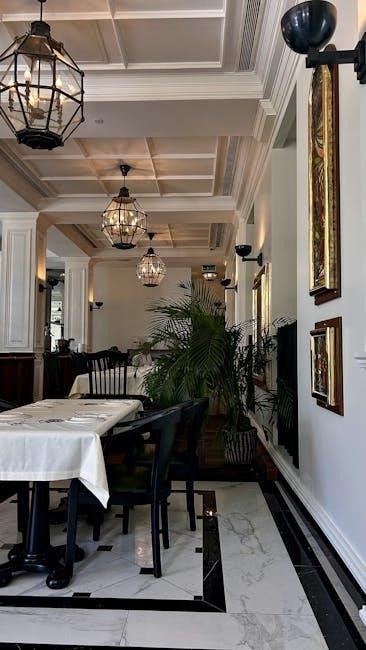
Material Considerations
Fabric type and stretch significantly impact tablecloth fit and appearance. Choose materials that drape well and consider stretch for tight fits‚ ensuring a smooth‚ even finish.
7.1 Fabric Type and Drape
The choice of fabric is crucial for both functionality and aesthetics. Cotton and polyester are popular for their durability and ease of care‚ while linen offers a luxurious texture. Silk and satin are ideal for formal events‚ providing a sleek‚ elegant drape. When selecting fabric‚ consider how it will drape over the table edges‚ as this affects the overall appearance. Thicker fabrics like canvas may not drape as smoothly‚ while lightweight materials like voile create a soft‚ flowing effect. Always pre-wash fabrics to account for shrinkage before cutting and sewing.
7.2 Stretch and Shrinkage Factors
Consider the fabric’s stretch and shrinkage when measuring for your tablecloth. Natural fibers like cotton and linen may shrink after washing‚ affecting measurements. Synthetic materials like polyester and spandex offer less shrinkage but may stretch over time‚ altering the fit. Always pre-wash fabric before cutting to ensure accuracy. For elastic tablecloths‚ account for stretch by measuring the table’s dimensions and adding extra fabric for a snug fit. Using stretch-friendly patterns ensures a smooth drape and prevents puckering; Properly accounting for these factors guarantees a tailored look and prevents unsightly wrinkles or sagging.
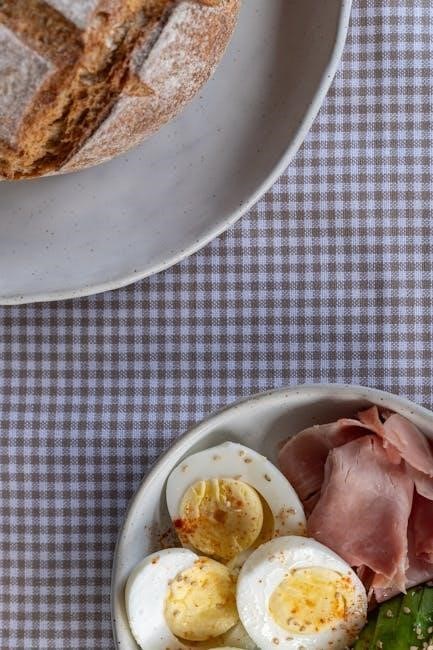
Tools Needed for Measurement
A measuring tape and calculator are essential for accurate tablecloth measurements. The tape measures the table’s dimensions‚ while the calculator helps determine fabric requirements and drop lengths.
8.1 Measuring Tape
A measuring tape is indispensable for accurately determining your table’s dimensions. Use it to measure the diameter for round tables or the length and width for rectangular or oval tables. Ensure the tape is straight and level for precise readings. This tool helps calculate the correct tablecloth size‚ ensuring a proper fit and desired aesthetic. Measure across the center for round tables and from edge to edge for others. Accurate measurements are crucial for a seamless look‚ whether for formal events or casual gatherings. A reliable measuring tape guarantees the perfect fit‚ avoiding ill-fitting tablecloths that detract from your setting.
8.2 Calculator
A calculator is essential for precise calculations when determining tablecloth size. Use it to compute fabric requirements‚ such as adding twice the desired drop to the table’s dimensions for rectangular or oval tables. For round tables‚ calculate the diameter and add the drop on both sides. Online calculators can simplify this process‚ ensuring accurate results. This tool helps avoid errors in measurement and fabric estimation‚ ensuring your tablecloth fits perfectly. Whether calculating for formal events or casual gatherings‚ a calculator streamlines the process‚ saving time and ensuring a professional finish. Accurate calculations are key to achieving the perfect tablecloth fit.
Common Mistakes to Avoid
Avoid incorrect measurements by ensuring accurate table dimensions and fabric requirements; Neglecting fabric stretch can lead to ill-fitting tablecloths‚ so always consider material properties during calculations.
9.1 Incorrect Measurements
One of the most common mistakes is rushing through the measurement process‚ leading to inaccurate dimensions. Always use a measuring tape to ensure precision‚ especially for round tables‚ where diameter is crucial. For rectangular or oval tables‚ measure both length and width carefully. Double-check your calculations to avoid errors in fabric requirements. Assuming fabric stretch without accounting for it can also lead to poor fit. Take your time to measure correctly‚ as incorrect measurements can result in a tablecloth that is too small or overly bulky‚ compromising both appearance and functionality.
9.2 Ignoring Fabric Stretch
Ignoring fabric stretch is a common oversight that can lead to a poorly fitting tablecloth. Different materials have varying degrees of stretch‚ and failing to account for this can result in a tablecloth that sags or appears too tight. Cotton fabrics‚ for instance‚ have minimal stretch‚ while spandex blends offer more flexibility. Always consider the fabric type and its stretch characteristics before cutting or sewing. Neglecting this step can compromise the tablecloth’s appearance and functionality‚ making it look unprofessional‚ especially in formal settings. Properly accounting for fabric stretch ensures a smooth‚ even drape and a polished finish.
Tablecloth Size Chart
Refer to our chart for standard sizes‚ covering round‚ rectangular‚ oval‚ and square tables. Measure your table and match its dimensions for a perfect fit every time.
10.1 Standard Sizes for Round Tables
For round tables‚ standard tablecloth sizes are based on the table’s diameter plus twice the desired drop. Common sizes include 90″‚ 108″‚ and 120″ diameters‚ suitable for 72″‚ 84″‚ and 96″ tables respectively. These measurements ensure a elegant drape and uniform appearance. Always round up if your table’s diameter doesn’t match standard sizes exactly. Use a size chart or calculator to confirm the perfect fit for your event or home setup‚ ensuring the tablecloth hangs evenly and enhances the table’s visual appeal.
10.2 Standard Sizes for Rectangular Tables
Standard tablecloth sizes for rectangular tables vary based on length and width. Common sizes include 90″ x 132″ and 90″ x 156″‚ suitable for 72″ and 96″ long tables‚ respectively. To determine fabric requirements‚ add twice the desired drop to both the length and width. For example‚ a 72″ x 30″ table with a 15″ drop requires a 102″ x 60″ tablecloth. Always round up to the nearest standard size if your table’s dimensions don’t match exactly. This ensures a seamless fit and a polished appearance for any occasion‚ whether formal or casual.
Measuring for Table Skirting
Measure the table’s perimeter to determine skirting length. Add extra for a smooth drape and seams. Calculate fabric requirements based on height and desired gather or pleat.
11.1 Skirting Length Calculation
To determine the length of skirting needed‚ start by measuring the perimeter of your table. For round tables‚ calculate the circumference using the diameter. For rectangular or oval tables‚ add the lengths of all sides. Next‚ consider the height of the skirting and any additional fabric desired for gathering or pleats. Add a few inches to the total for hems and seams. This comprehensive approach ensures your table skirting fits perfectly and creates a polished appearance for any event or setting.
11.2 Skirting Fabric Requirements
To determine fabric needs for skirting‚ measure the table’s perimeter and add twice the desired drop. For round tables‚ divide the circumference by the fabric width. For rectangular or oval tables‚ calculate the perimeter and divide by the fabric width‚ rounding up if necessary. Include extra fabric for hems and seams. Accurate measurements ensure a seamless fit‚ preventing fabric shortages. Always double-check calculations and consider consulting a size chart for precision. This step ensures your skirting drapes elegantly and complements the table’s appearance perfectly.
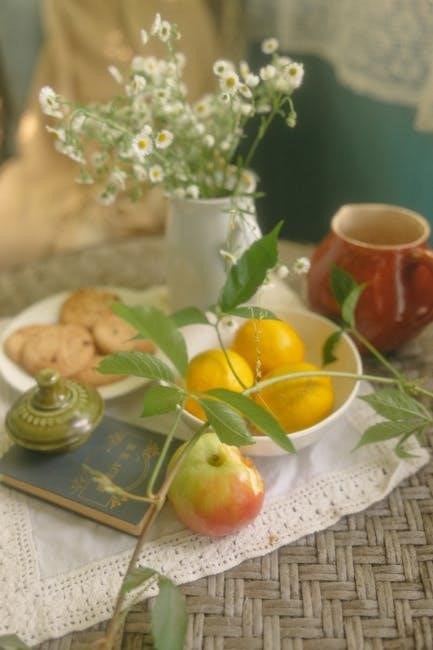
Special Cases
Special cases like elliptical or irregularly shaped tables require tailored measurements. For elliptical tables‚ measure the longest and shortest diameters. For irregular shapes‚ break the table into simpler geometric forms and calculate fabric needs accordingly. Always add extra fabric for seams and drape. This ensures a perfect fit for unique table shapes‚ enhancing both functionality and aesthetics. Proper measurement techniques are crucial for achieving a polished look‚ even for non-traditional table designs. Accuracy is key to avoiding fabric shortages and ensuring a flawless appearance.
12.1 Measuring for Elliptical Tables
Measuring an elliptical table involves determining its longest and shortest diameters. Use a flexible measuring tape to find the longest diameter‚ which runs through the center from one farthest point to the other. Next‚ measure the shortest diameter‚ perpendicular to the longest one. Add twice the desired drop length to both measurements to calculate the tablecloth size. For example‚ if the longest diameter is 90 inches and the shortest is 60 inches‚ with a 15-inch drop‚ the tablecloth dimensions would be 90 + 30 = 120 inches in length and 60 + 30 = 90 inches in width. This ensures proper coverage and a polished appearance. Always consider fabric stretch and seam allowances when calculating fabric requirements for elliptical tablecloths.
12.2 Measuring for Irregularly Shaped Tables
Irregularly shaped tables require a tailored approach to measurement. Use a flexible measuring tape to outline the table’s perimeter‚ noting any protrusions or cutouts. Divide the shape into simpler geometric sections‚ such as rectangles or triangles‚ and measure each separately. Calculate the total area by summing these sections. To determine the tablecloth size‚ add twice the desired drop length to the maximum length and width of the table. Consider using a custom-made tablecloth or multiple standard-size cloths to achieve full coverage. Always account for fabric stretch and seam allowances to ensure a seamless fit.

Tips for a Perfect Fit
Use a tablecloth calculator to ensure accuracy. Always measure twice and consider fabric stretch. Adjust for table legs or obstructions to achieve a smooth‚ even drape.
- Double-check measurements for accuracy.
- Account for fabric stretch and drape.
13.1 Using a Tablecloth Calculator
A tablecloth calculator simplifies the process of determining the perfect size. Input your table’s dimensions and desired drop length‚ and the calculator provides precise fabric requirements.
- Enter table shape‚ size‚ and preferred overhang.
- Get exact measurements for a seamless fit.
- Some calculators also account for fabric stretch and table obstructions.
This tool eliminates guesswork‚ ensuring your tablecloth drapes beautifully and fits perfectly‚ whether for a formal event or casual gathering.
13.2 Adjusting for Table Legs and Obstructions
When measuring for a tablecloth‚ consider the table legs and any obstructions. Measure the table’s length‚ width‚ and height‚ including the legs‚ to ensure the cloth fits properly. For round tables‚ measure the diameter‚ and for rectangular or oval tables‚ measure the length and width. Add the desired drop to these measurements. If the table has leaves or extensions‚ measure with them in place. Use clips or clamps to secure the cloth around legs or obstructions. Choose fabric that drapes smoothly and consider elastic or ties for a secure fit. This ensures the tablecloth hangs evenly and elegantly‚ accommodating all table configurations. Proper adjustment guarantees both functionality and a polished appearance for any event.
Accurate tablecloth measurement ensures a perfect fit‚ enhancing both functionality and aesthetics for any occasion. Proper sizing guarantees a polished appearance and seamless integration with your table setup.
14.1 Final Checklist for Tablecloth Measurement
- Measure your table accurately‚ noting its shape and dimensions.
- Determine the desired overhang for the perfect aesthetic.
- Calculate fabric requirements based on table size and drop length.
- Consider the occasion’s formality to choose the right style.
- Check for obstructions like table legs that may affect fit.
- Refer to standard size charts for common table shapes.
- Use a tablecloth calculator for precise measurements.
- Double-check all calculations to ensure a seamless fit.
14.2 Where to Buy or Custom Make Your Tablecloth
Once measurements are finalized‚ you can purchase tablecloths from home goods stores‚ online retailers‚ or specialty fabric shops. For custom sizes‚ consider working with a seamstress or using bespoke services from brands like SFERRA‚ which offer tailored options. Online marketplaces also provide a wide range of standard and custom tablecloths. Use size guides and calculators on these platforms to ensure accuracy. If sewing your own‚ fabric stores like Jo-Ann or Hobby Lobby offer materials and tools. Always check reviews and product descriptions to confirm sizing and fabric quality before making a purchase.
